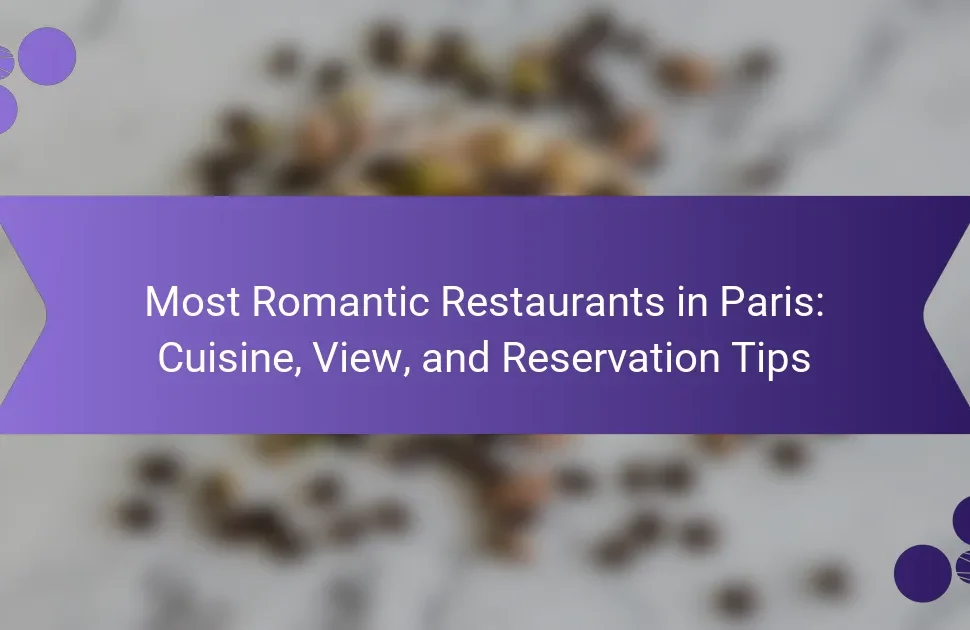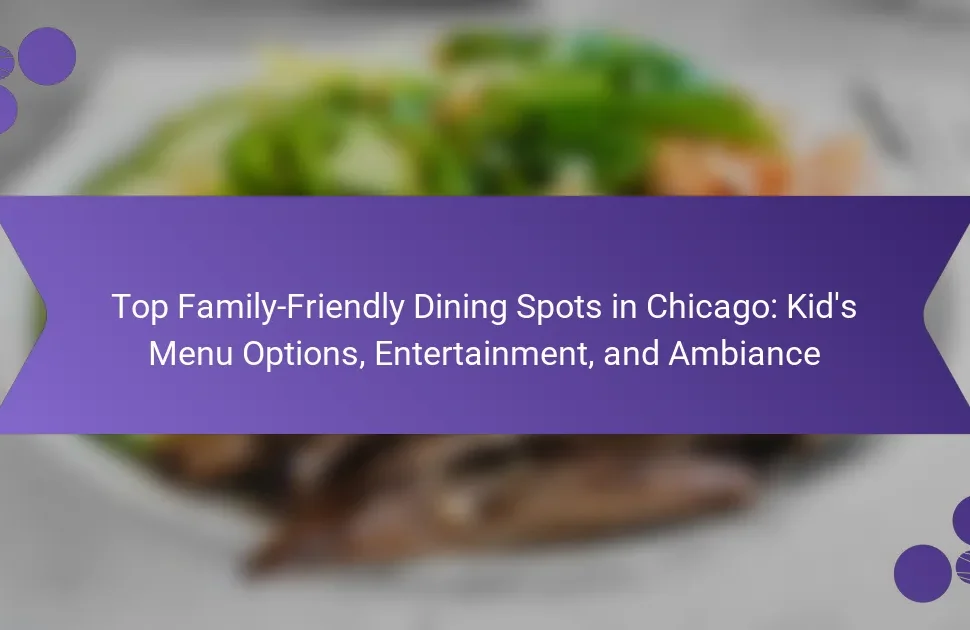
What are the Best Fine Dining Experiences in Las Vegas?
The best fine dining experiences in Las Vegas include Joël Robuchon, Le Cirque, and Twist by Pierre Gagnaire. Joël Robuchon offers French cuisine with a luxurious tasting menu. Le Cirque features vibrant decor and classic French dishes. Twist by Pierre Gagnaire serves innovative French cuisine with stunning views of the Strip. Each restaurant has received numerous accolades and Michelin stars. Joël Robuchon has consistently been rated among the top restaurants in the world. Le Cirque is known for its exceptional service and ambiance. Twist is celebrated for its creative approach to traditional dishes. These establishments exemplify the pinnacle of fine dining in Las Vegas.
How do fine dining experiences in Las Vegas differ from other cities?
Fine dining experiences in Las Vegas are characterized by their extravagant themes and celebrity chef collaborations. Las Vegas offers unique dining environments that often incorporate entertainment elements, such as live performances. Many restaurants in Las Vegas feature elaborate decor and immersive atmospheres that enhance the dining experience. The city is known for its diverse culinary offerings, representing global cuisines. Additionally, Las Vegas restaurants frequently showcase exclusive tasting menus and innovative dishes. The competition among establishments drives high standards in service and culinary creativity. Many fine dining venues in Las Vegas are located within luxury hotels, providing convenience to guests. Overall, the combination of opulence, entertainment, and culinary diversity sets Las Vegas apart from fine dining experiences in other cities.
What unique characteristics define Las Vegas fine dining?
Las Vegas fine dining is characterized by its extravagant culinary experiences and high-profile chefs. The city features a diverse range of international cuisines. Many restaurants are located within luxury resorts, enhancing the dining atmosphere. Signature dishes often highlight unique ingredients and innovative techniques. The ambiance is typically opulent, with lavish decor and attention to detail. Fine dining establishments often provide personalized service, elevating the guest experience. Reservations are frequently required due to high demand. Dress codes are commonly enforced, reflecting the upscale nature of these venues. These characteristics collectively create a distinctive fine dining scene unique to Las Vegas.
How has the fine dining scene evolved in Las Vegas?
The fine dining scene in Las Vegas has transformed significantly over the past few decades. Initially, it focused primarily on buffet-style dining and casual eateries. However, the introduction of celebrity chefs in the early 2000s changed the landscape. Renowned chefs like Wolfgang Puck and Emeril Lagasse opened high-end restaurants on the Strip. This shift brought innovative culinary techniques and diverse cuisines to the forefront. Today, Las Vegas boasts over 150 fine dining establishments. Many of these restaurants offer unique dining experiences, emphasizing quality ingredients and artistic presentation. The city has also seen a rise in Michelin-starred restaurants, showcasing its commitment to culinary excellence. This evolution reflects a broader trend towards gourmet dining experiences that cater to a sophisticated clientele.
What are the key elements of a fine dining experience?
Key elements of a fine dining experience include exceptional food quality, attentive service, and an elegant atmosphere. Exceptional food quality is characterized by high-quality ingredients and expert preparation. Dishes often feature artistic presentation and unique flavor combinations. Attentive service involves knowledgeable staff who provide personalized recommendations and timely assistance. An elegant atmosphere is created through sophisticated decor, ambient lighting, and comfortable seating arrangements. These elements combine to deliver a memorable dining experience that emphasizes luxury and sophistication.
What role do chef’s signature dishes play in fine dining?
Chef’s signature dishes are central to fine dining experiences. They showcase the chef’s creativity and culinary expertise. These dishes often reflect the chef’s personal style and philosophy. Signature dishes create a unique identity for a restaurant. They can attract diners seeking exceptional and memorable meals. The exclusivity of these dishes enhances the overall dining experience. Additionally, they often feature high-quality ingredients and innovative techniques. This combination elevates the perception of fine dining establishments.
How does ambiance enhance the dining experience?
Ambiance significantly enhances the dining experience by creating an emotional atmosphere. It influences diners’ perceptions and feelings about their meal. Factors such as lighting, music, and decor contribute to this atmosphere. For example, dim lighting can promote intimacy, while upbeat music can create a lively environment. Research indicates that a well-designed ambiance can increase customer satisfaction by 20%. Additionally, ambiance can impact the perceived taste of food. Studies show that diners rate food more favorably in pleasant environments. Therefore, a carefully curated ambiance is essential for an enjoyable dining experience.
Why is dress code important in fine dining establishments?
Dress code is important in fine dining establishments to maintain a certain atmosphere and level of professionalism. It sets expectations for guests regarding appropriate attire, ensuring a cohesive dining experience. A well-defined dress code enhances the overall ambiance and reflects the establishment’s brand identity. It also promotes respect among diners, as everyone adheres to similar standards. Fine dining often involves special occasions, and appropriate attire elevates the significance of these events. Additionally, many fine dining restaurants have a history of formal traditions, making dress code a part of their cultural heritage. Studies indicate that dress codes can influence customer perceptions and satisfaction in dining experiences.

Which Chefs are Renowned for Their Signature Dishes in Las Vegas?
Some renowned chefs for their signature dishes in Las Vegas include Gordon Ramsay, Joël Robuchon, and Thomas Keller. Gordon Ramsay is famous for his Beef Wellington at Gordon Ramsay Steak. Joël Robuchon, who held the most Michelin stars in the world, is known for his signature dish, Truffle Mashed Potatoes. Thomas Keller’s Bouchon serves a celebrated Oysters and Champagne dish. These chefs have established themselves through unique culinary creations that attract food enthusiasts. Their restaurants often receive high praise and awards for excellence in fine dining.
What makes a chef’s signature dish stand out?
A chef’s signature dish stands out due to its unique flavor profile and presentation. This dish often incorporates personal touches that reflect the chef’s culinary style. High-quality, locally sourced ingredients contribute to its distinct taste. Innovation in cooking techniques can enhance the dish’s appeal. Additionally, the dish may tell a story or evoke a specific cultural influence. Recognition from food critics and awards can further elevate its status. Signature dishes often become synonymous with the chef’s identity. These elements combine to create an unforgettable dining experience.
How do signature dishes reflect a chef’s culinary style?
Signature dishes embody a chef’s culinary style through unique flavors, techniques, and presentations. They showcase the chef’s personal touch and creativity. Each dish often highlights specific ingredients that the chef favors. This selection reflects cultural influences and culinary training. Signature dishes also demonstrate the chef’s philosophy on food and dining. For example, a focus on local ingredients may signify a commitment to sustainability. The preparation methods used can reveal the chef’s technical skills and innovation. Overall, signature dishes serve as a culinary signature, representing the chef’s identity in the culinary world.
Which chefs are currently leading the fine dining scene in Las Vegas?
Thomas Keller, Joël Robuchon, and Éric Ripert are currently leading the fine dining scene in Las Vegas. Thomas Keller operates the acclaimed restaurant Per Se, known for its exquisite French cuisine. Joël Robuchon, a legendary chef, offers a luxurious dining experience at his restaurant in the MGM Grand. Éric Ripert is celebrated for his seafood-focused menu at Le Bernardin, which showcases exceptional culinary artistry. These chefs have consistently earned Michelin stars and accolades, solidifying their status in the culinary world. Their restaurants are frequently recognized in top dining rankings, reflecting their influence and innovation in fine dining.
What are some must-try signature dishes in Las Vegas?
Some must-try signature dishes in Las Vegas include the Beef Wellington from Gordon Ramsay Steak. This dish features a perfectly cooked beef tenderloin wrapped in puff pastry. Another signature dish is the “Pork Belly” at é by José Andrés, known for its rich flavor and unique presentation. The “Oysters and Pearls” from Thomas Keller’s Per Se is a luxurious dish combining caviar and tapioca. For a taste of Italian cuisine, try the “Spaghetti Carbonara” at Carbone, which is celebrated for its authentic flavor. Lastly, the “Chocolate Cake” from Jean Philippe Patisserie is a dessert that is both visually stunning and delicious. Each of these dishes represents a high standard of culinary excellence in Las Vegas.
What specific ingredients are commonly used in these dishes?
It is not possible to provide a specific answer to the question about the ingredients commonly used in the dishes from the topic “Best Fine Dining Experiences in Las Vegas: Chef’s Signature Dishes, Ambiance, and Dress Code” without additional context or details about the specific dishes referenced.
How do presentation and flavor combine in these signature dishes?
Presentation and flavor combine in signature dishes through visual appeal and taste harmony. Chefs design dishes to be aesthetically pleasing, enhancing the dining experience. The use of color, texture, and arrangement attracts attention and stimulates appetite. Flavor profiles are carefully balanced to complement the visual elements. For instance, a vibrant sauce may accentuate the dish’s colors while adding depth to its taste. This synergy between presentation and flavor elevates the overall enjoyment of the meal. Research indicates that visually appealing dishes can enhance perceived flavor satisfaction. Thus, presentation directly influences the perception of taste in fine dining.

What Ambiance Can Diners Expect in Las Vegas Fine Dining?
Diners can expect a luxurious and vibrant ambiance in Las Vegas fine dining. The atmosphere often features elegant decor and sophisticated lighting. Many restaurants incorporate artistic elements, creating a visually stunning environment. Live entertainment, such as music or performances, enhances the dining experience. High-end venues typically offer spacious seating arrangements for privacy. Some establishments boast unique themes that reflect the culinary style. The service is usually attentive and personalized, adding to the overall experience. Fine dining in Las Vegas often attracts a fashionable crowd, contributing to the upscale vibe.
How does the ambiance contribute to the overall dining experience?
Ambiance significantly enhances the overall dining experience by influencing mood and perception. A well-designed ambiance creates a welcoming environment. It can evoke emotions, making meals more enjoyable. Factors like lighting, music, and decor play crucial roles. For instance, dim lighting can foster intimacy. Background music can enhance relaxation or excitement. Studies show that ambiance impacts taste perception. A pleasant setting can make food seem more flavorful. Therefore, the ambiance is essential for a memorable dining experience.
What design elements are commonly found in fine dining restaurants?
Fine dining restaurants commonly feature elegant decor, sophisticated lighting, and high-quality furnishings. These elements create an upscale atmosphere. Tables are often adorned with crisp linens and fine china. Ambient lighting is typically soft and warm, enhancing the dining experience. Artwork and unique design accents are frequently present, adding character to the space. The layout is usually spacious, providing privacy for diners. Additionally, attention to detail is evident in every aspect, from table settings to the overall ambiance. These design elements contribute to a luxurious dining experience that patrons expect in fine dining establishments.
How do lighting and music influence the dining atmosphere?
Lighting and music significantly influence the dining atmosphere. Proper lighting sets the mood, creating warmth or intimacy. Bright lights can energize the space, while dim lighting fosters relaxation. Studies show that soft lighting enhances food enjoyment and encourages longer dining experiences.
Music also plays a critical role. The tempo and genre can affect diners’ perceptions. For instance, slower music can lead to longer meals, while upbeat tunes may speed up service. Research indicates that background music influences the taste perception of food.
Combined, lighting and music create a cohesive ambiance that enhances the overall dining experience. This synergy can elevate fine dining, making it memorable and enjoyable.
What types of dining atmospheres are available in Las Vegas?
Las Vegas offers a variety of dining atmospheres. These include upscale fine dining, casual eateries, themed restaurants, and buffet-style dining. Upscale fine dining features elegant decor and gourmet cuisine. Casual eateries provide a relaxed environment with diverse menu options. Themed restaurants often incorporate entertainment and unique concepts. Buffet-style dining offers a wide range of dishes in a self-serve format. Each atmosphere caters to different preferences and occasions. The city’s dining scene reflects its vibrant culture and hospitality.
How does the location of a restaurant affect its ambiance?
The location of a restaurant significantly affects its ambiance. A restaurant situated in a bustling urban area may have a lively and energetic atmosphere. In contrast, a restaurant located in a quiet, scenic area may offer a more relaxed and intimate setting. Proximity to landmarks or attractions can enhance the dining experience by providing visual interest and a sense of place. The surrounding environment, including noise levels and foot traffic, also influences how patrons perceive the restaurant’s ambiance. For example, outdoor seating with views can create a unique dining experience. Studies show that ambiance is a key factor in customer satisfaction, impacting their overall dining experience.
What themes are popular among fine dining establishments in Las Vegas?
Popular themes among fine dining establishments in Las Vegas include luxury, innovation, and cultural fusion. Luxury is often reflected in opulent decor and high-end service. Innovation showcases unique culinary techniques and creative presentations. Cultural fusion highlights a blend of flavors and dishes from various cuisines. Many restaurants emphasize a theatrical dining experience. This includes interactive elements, such as chef’s tables or live cooking stations. Seasonal and locally sourced ingredients are also a common focus. These themes enhance the overall dining experience, making it memorable for guests.

What Dress Codes Should Diners Be Aware of in Fine Dining?
Diners should be aware of several dress codes in fine dining. Common dress codes include formal, semi-formal, and business casual. Formal attire typically requires men to wear suits and ties, while women may wear evening gowns or cocktail dresses. Semi-formal dress codes allow for dressy attire but are less strict. Business casual often includes dress shirts and slacks for men, and blouses or dresses for women. Some establishments may specify “smart casual,” which combines polished yet comfortable clothing. Adhering to these dress codes enhances the dining experience and shows respect for the restaurant’s ambiance. Fine dining restaurants often communicate their dress code on their websites or reservation confirmations.
Why is dress code significant in fine dining restaurants?
Dress code is significant in fine dining restaurants because it enhances the overall dining experience. A formal dress code sets expectations for guests, creating an atmosphere of sophistication. This formality elevates the dining experience, aligning with the high-quality service and cuisine offered. Research shows that ambiance, including dress, influences customer satisfaction. According to a study published in the Journal of Hospitality & Tourism Research, patrons perceive higher quality in establishments with strict dress codes. Thus, a dress code contributes to the restaurant’s identity and customer expectations.
What are the common dress codes found in Las Vegas fine dining?
Common dress codes in Las Vegas fine dining include upscale casual, business casual, and formal attire. Upscale casual typically allows nice jeans, dress shirts, and elegant shoes. Business casual often requires slacks, blouses, and closed-toe shoes. Formal attire usually means suits for men and cocktail dresses for women. Some high-end restaurants may specify black tie or evening wear. These dress codes ensure a refined dining experience. Many establishments enforce these standards to maintain an upscale atmosphere.
How can diners ensure they meet the dress code requirements?
Diners can ensure they meet the dress code requirements by carefully reviewing the restaurant’s guidelines. Many fine dining establishments specify their dress codes on their websites or menus. Common dress codes include formal, semi-formal, and smart casual. Diners should select attire that aligns with these specifications. For example, formal attire often includes suits or evening gowns. Semi-formal may allow dress shirts and dress pants. Smart casual can include collared shirts and nice shoes. Additionally, diners can call the restaurant for clarification if unsure. Following these steps helps avoid any potential issues upon arrival.
What tips can enhance the fine dining experience in Las Vegas?
To enhance the fine dining experience in Las Vegas, consider making reservations in advance. Popular restaurants often fill up quickly. Dress appropriately for the upscale environment. Many fine dining establishments have a formal dress code. Arriving on time shows respect for the restaurant and staff. Familiarize yourself with the menu beforehand. This helps in making informed choices. Engage with the staff for recommendations on dishes and wine pairings. This can elevate your meal significantly. Lastly, be open to trying new flavors and dishes. Las Vegas offers diverse culinary experiences.
How can diners prepare for their visit to a fine dining restaurant?
Diners can prepare for their visit to a fine dining restaurant by making a reservation in advance. This ensures a table is available, especially during busy times. Diners should also review the restaurant’s menu online. Understanding the offerings helps in making informed choices. Dressing appropriately is crucial; fine dining often has a specific dress code. Checking the dress code in advance can prevent any issues upon arrival. Additionally, diners should consider their budget. Fine dining can be expensive, so knowing the price range is important. Finally, arriving on time shows respect for the establishment and other guests. Being punctual enhances the overall dining experience.
What etiquette should diners follow in a fine dining setting?
Diners in a fine dining setting should follow specific etiquette to enhance the dining experience. First, arrive on time for your reservation. Punctuality shows respect for the restaurant and other guests. Second, dress appropriately according to the restaurant’s dress code. Fine dining establishments often have a formal or upscale casual requirement.
Third, place your napkin on your lap upon sitting. This is a traditional sign of readiness to eat. Fourth, use utensils from the outside in, starting with the outermost utensils for the first course. This method is standard in formal dining. Fifth, engage in polite conversation without being overly loud. Maintaining a respectful volume is essential in a fine dining atmosphere.
Sixth, refrain from using your phone at the table. This practice minimizes distractions for yourself and others. Lastly, thank the staff for their service when leaving. Gratitude is a fundamental aspect of dining etiquette. Following these guidelines contributes to a pleasant dining experience for everyone involved.
The main entity of the article is fine dining experiences in Las Vegas, highlighting renowned restaurants and their signature dishes. The article provides an overview of top establishments such as Joël Robuchon, Le Cirque, and Twist by Pierre Gagnaire, known for their exceptional cuisine and ambiance. It discusses the unique characteristics of Las Vegas fine dining, including extravagant themes, celebrity chef influences, and the evolution of the culinary scene. Additionally, it addresses key elements of a fine dining experience, the significance of ambiance and dress codes, and offers insights into must-try dishes and dining etiquette.




